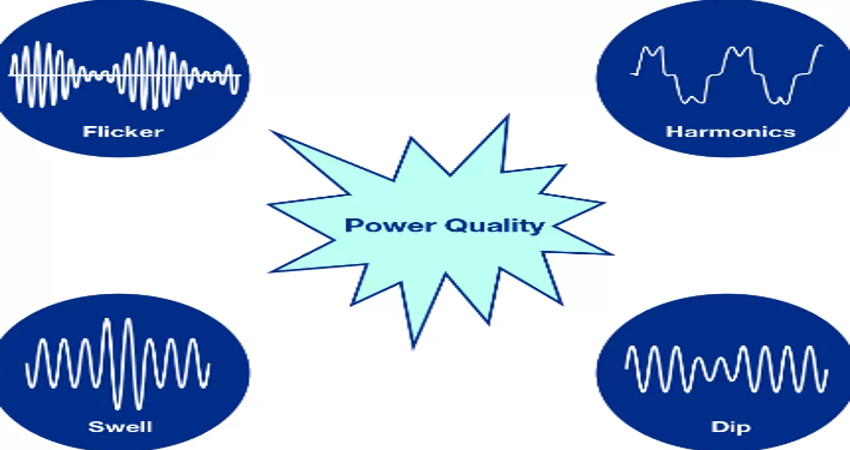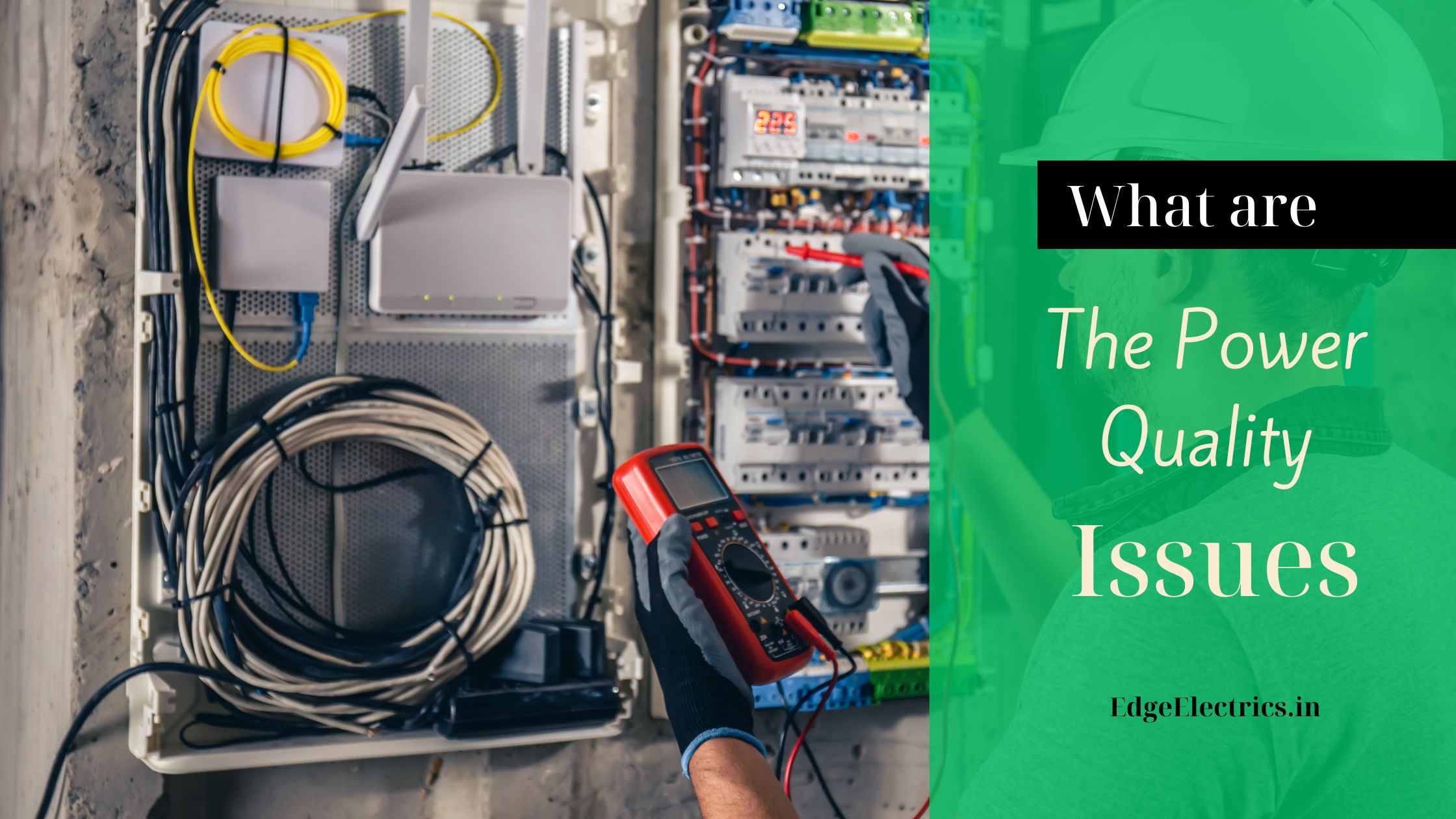
Power quality disturbances are disruptions in the electrical supply that can negatively affect the performance of sensitive equipment. Understanding these disturbances is important for identifying issues in an electrical system and preventing costly downtime or damage. Here we learn the types of power quality disturbances.
In industries where electrical systems drive critical operations, maintaining high power quality is paramount. Let’s have a look at the various types of power quality disturbances and how they can affect electrical systems.
Types of Power Quality Disturbances
1. Voltage Sags (Dips)
A voltage sag occurs when the voltage level decreases below the normal range for a brief period, usually lasting less than a second. This disturbance typically happens by sudden increases in load demand or faults on the power system. Though brief, voltage sags can affect sensitive equipment like computers and manufacturing machinery, potentially leading to downtime or equipment failure.
Common Causes:
- Short circuits
- Large motor startups
- Lightning strikes
Effects:
- Device malfunction or shutdown
- Loss of productivity in manufacturing settings
2. Voltage Swells
Voltage swells are the opposite of sags, involving a temporary increase in voltage above the normal level. These surges usually last only a few milliseconds but can cause significant damage to electronic components, especially sensitive devices like servers and control systems.
Common Causes:
- Sudden reduction in large loads
- Fault conditions
- Poorly regulated power systems
Effects:
- Damage to sensitive electronic equipment
- Overheating of motors or transformers
3. Harmonics
Harmonic distortions are deviations from the ideal sinusoidal waveform of the power supply, caused by the presence of non-linear loads, such as variable frequency drives, power electronics, and fluorescent lighting. Harmonics can lead to overheating of conductors and transformers, causing energy losses and reducing the lifespan of electrical equipment.
Common Causes:
- Power electronics (like inverters)
- Arc furnaces
- Non-linear loads (data centres, office equipment)
Effects:
- Overheating of transformers and motors
- Interference with communication lines
- Increased energy consumption
4. Flicker
Flicker refers to the rapid and repeated variation of voltage levels that can cause visible changes in lighting intensity. While flicker may not always be damaging to electrical equipment, it can be disruptive to operations, especially in environments where stable lighting is essential, such as hospitals or manufacturing plants.
Common Causes:
- Arc welding
- Rapidly varying loads
- Fluctuations in the power grid
Effects:
- Eye strain and discomfort for workers
- Malfunctions in lighting-sensitive processes
5. Voltage Imbalance
Voltage imbalance occurs when the voltages on a three-phase system are not equal in magnitude or phase angle. This is a common issue in systems with unbalanced loads, such as those found in industrial facilities. Voltage imbalances can reduce the efficiency of motors and transformers, leading to overheating and increased maintenance costs.
Common Causes:
- Unbalanced loads (e.g., single-phase loads on a three-phase system)
- Faulty power distribution networks
- Blown fuses in one phase of a system
Effects:
- Motor overheating and premature failure
- Reduced system efficiency
- Increased energy consumption
6. Transient Disturbances
Transients are sudden, short-duration increases in voltage or current that can severely damage equipment. They are often caused by switching operations or lightning strikes. Transients can either be impulsive, involving a rapid spike of voltage, or oscillatory, characterised by a rapid enhancement followed by a damped oscillation.
Common Causes:
- Lightning strikes
- Switching of inductive loads
- Faults in the power system
Effects:
- Destruction of sensitive electronics
- Data corruption
- Insulation breakdown
7. Frequency Variations
Frequency variations occur when the supply frequency deviates from the nominal value (typically 50 or 60 Hz, depending on the region). It can disrupt the performance of devices dependent on steady clock cycles or rotational speeds, like synchronous motors and clocks.
Common Causes:
- Unstable generation sources
- Large fluctuations in demand
- Faults in the power grid
Effects:
- Equipment malfunction
- Instability in power generation and distribution systems
Conclusion
Power quality disturbances can range from minor nuisances, like flicker, to serious issues that cause equipment damage or significant downtime. Understanding these disturbances and their causes is crucial for mitigating their effects and ensuring reliable and efficient operation of electrical systems. Monitoring and improving power quality is essential for maintaining operational stability in industrial, commercial, and residential environments.
By addressing power quality disturbances through proactive monitoring and mitigation strategies, businesses can enhance efficiency, reduce maintenance costs, and extend the lifespan of their equipment.
continue reading
Related Posts
Power Quality Disturbances are voltage sags, swells, spikes, fluctuation and […]
Maintaining Good Power Quality includes several important characteristics such as […]
Ensuring good power quality is crucial in electrical systems. As […]



